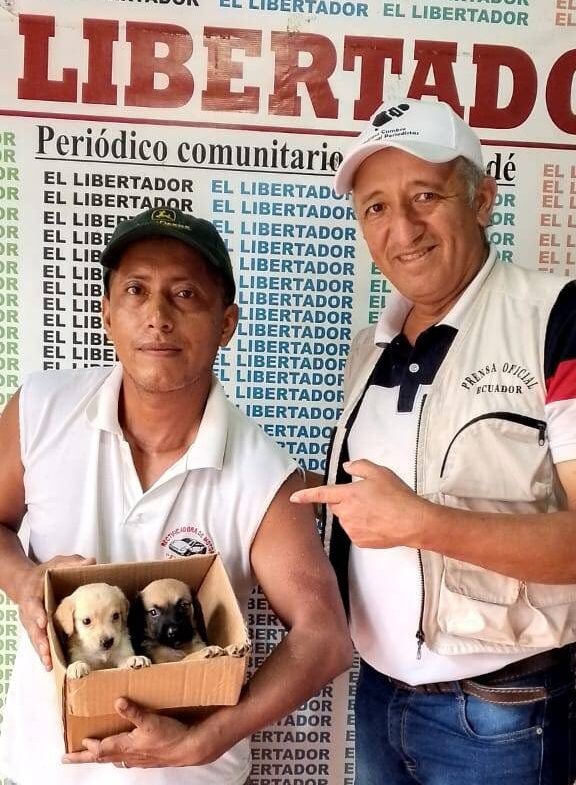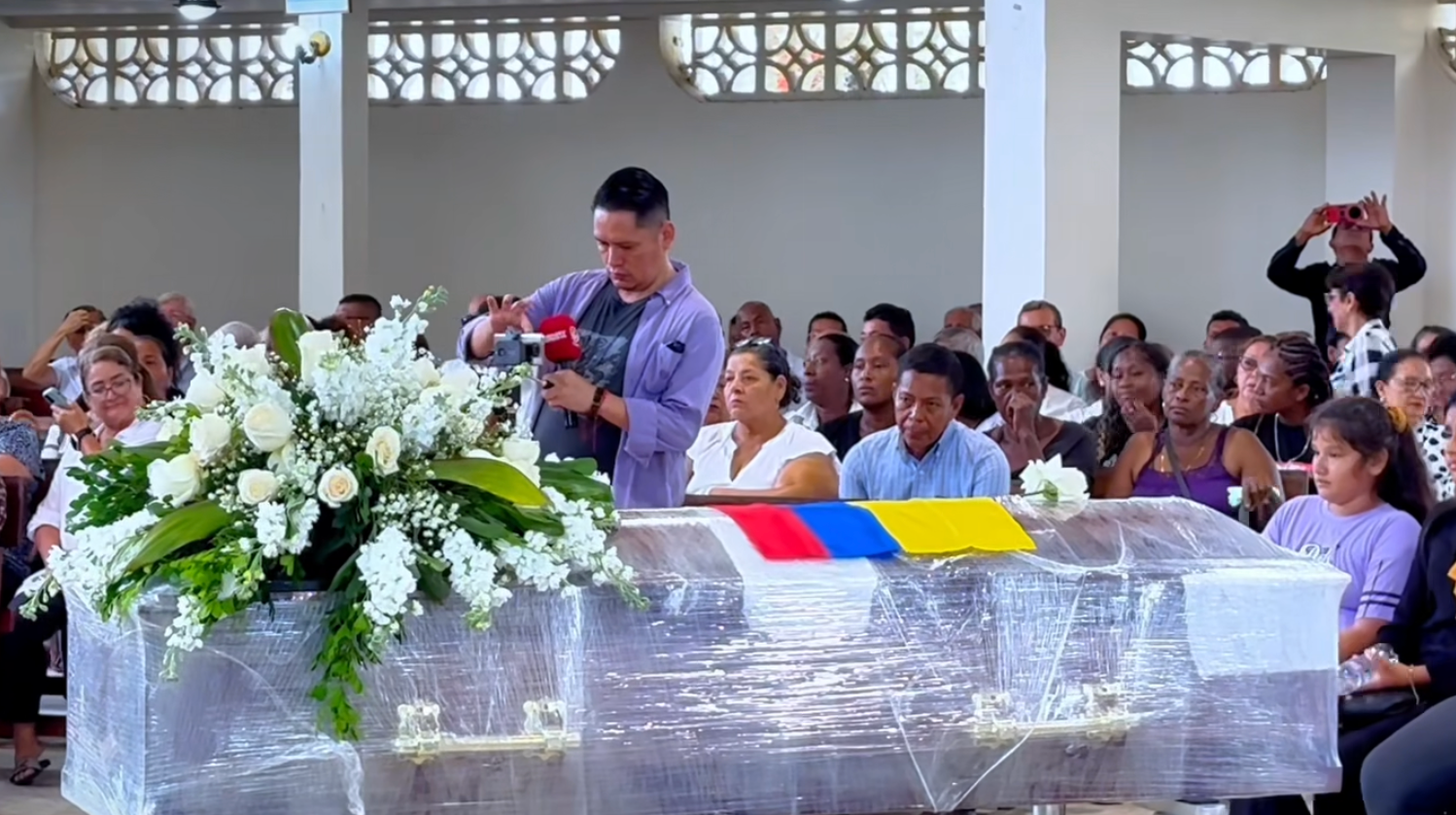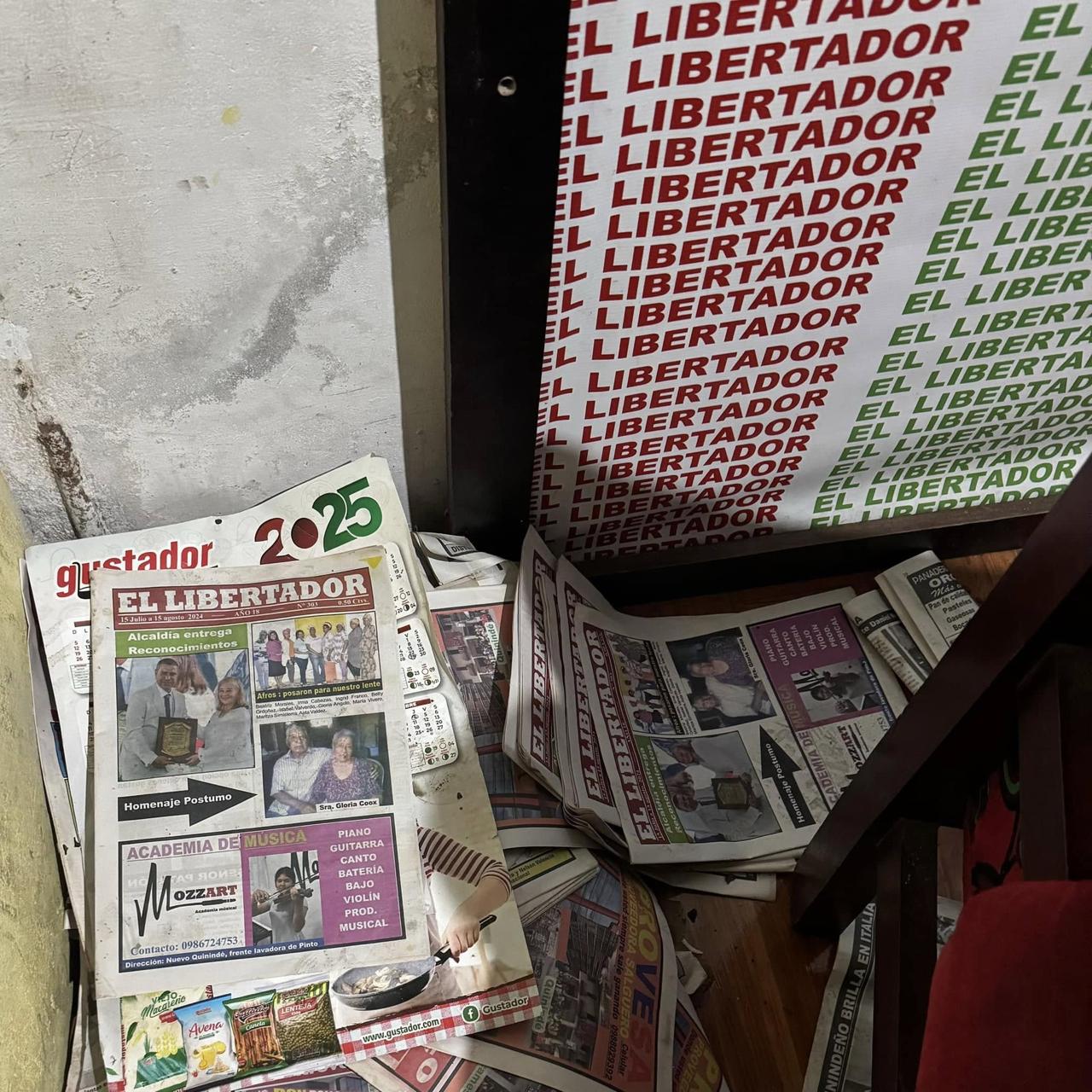The most heartbreaking story reporter Henry Córdova has covered in his 16-year career was on the death of his colleague and friend Patricio Aguilar, who was shot to death on March 4, in the city of Quinindé in Ecuador.
Aguilar, founder and editor of the community newspaper El Libertador, had gone out to cover the alleged release of a kidnapping victim when he was shot more than 30 times.
Colleagues and residents of Quinindé, a city in the coastal province of Esmeraldas, near the border with Colombia, sought out Córdova to confirm or refute what was already being rumored on the streets.

Patricio Aguilar (right), founder of the community newspaper El Libertador, was shot and killed in Quinindé, Esmeraldas province, northern Ecuador. (Photo: Patricio Aguilar's Facebook page)
“This must have been the most painful professional experience of my life, the most heartbreaking,” Córdova told LatAm Journalism Review (LJR). “My first reaction was shock. It took me several minutes before I could go out to verify the incident and then return with the sad confirmation that it had indeed happened. I had to make the decision, on the night of the crime, to do a broadcast to confirm Patricio’s death and later to broadcast the entire funeral ceremony.”
Aguilar’s killing is part of what Córdova described as a “context of widespread violence” in Esmeraldas province, which has been on the rise since 2022 due to political instability and the advance of organized crime.
In Esmeraldas and other provinces along Ecuador’s northern border, the climate of violence is compounded by job insecurity and a lack of protection from the state. This combination has created an environment of vulnerability for journalists that has led to people leaving the profession, self-censorship, and news gaps.
Aguilar’s murder is the first killing of a journalist in Esmeraldas since 2018, when reporter Javier Ortega, photographer Paúl Rivas, and driver Efraín Segarra, all from the newspaper El Comercio, were kidnapped and killed in Mataje—a town in the same province neighboring Colombia.
The triple murder, which caused a global outcry, marked a turning point in journalist safety in Ecuador, according to Diana Amador, a journalist and member of the Ecuadorian investigative journalism and freedom of expression organization Periodistas sin Cadenas (or in English: Journalists Unbound).
“This issue jolted us into reality in a very abrupt way and made us see things that we probably had not realized before,” Amador told LJR. “Esmeraldas is a very troubled region, it is a very ‘hot’ spot, where there is significant presence of organized crime groups. The fact that it is also very close to the dissident factions of the Colombian guerrilla, separated only by a river, is another factor that greatly contributes to the danger.”
The increasing violence on Ecuador’s northern border affects all sectors of society, but journalists are especially exposed as they are the ones documenting the effects of that violence, Córdova said.
The rise in violence “explains what has happened to journalists, as part of a society that is being battered by crime,” Córdova said. “I personally could not say that there is a particular targeting of journalism, but journalists are the ones covering the news, and we’re put in the line of fire.”
Between June 2021 and October 2024, there were 32 documented attacks against media outlets and journalists in the four provinces closest to the Ecuador-Colombia border. Of those attacks, 13 occurred in Esmeraldas, 16 in Sucumbíos, nine in Imbabura, and one in Carchi, according to the report Journalism on the Northern Border, published in December 2024 by Periodistas sin Cadenas.
As of 10 days after Aguilar’s murder, authorities had not released official information about the case beyond basic details from the police report and the announcement of an open investigation.
“There has not even been a press conference to share the details of how the incident happened, much less any updates on proceedings, arrests, or leads on possible perpetrators,” Córdova said. “Especially because of the atrocity of the act—a crime involving 30 gunshots against a journalist, a very well-known media worker—we expected to have an official statement. And that has not happened.”
Ecuador has had a prevention and protection mechanism for journalistic work in place since 2022, created in response to the killing of the El Comercio journalists. However, organizations such as Periodistas sin Cadenas consider the mechanism useless, since President Daniel Noboa’s government did not allocate a budget for it for either 2024 or 2025.
“The reason the budget was not approved is because we are in an election year,” journalist María Fernanda Almeida, also a member of Periodistas sin Cadenas, told LJR. “The budget platform has been extended from last year. Since the mechanism had no budget last year, it does not have one this year either.”
Almeida said that due to the lack of resources, the mechanism has been limited to functions already carried out by nonprofit organizations, such as training journalists or keeping records of the number of attacks and threats.
“I have 30 years of experience in communications, 16 uninterrupted years in journalism, all on the front lines,” said Córdova. “During those years I have faced many dangers and have never felt any protection.”
Córdova said he has been the target of politically motivated legal persecution on three occasions since 2013. The most recent case, in 2018, resulted in a sentence of 20 days in prison and an order to pay $5,000 in damages. The ruling stemmed from a complaint by a former Esmeraldas legislator who accused him of “political violence” over a series of social media posts.

Journalist Henry Córdova said that his coverage of the murder and funeral of his colleague Patricio Aguilar was the most heartbreaking assignment of his life. (Photo: Courtesy of De Frente Quinindé)
Two years later, Córdova and his wife were attacked and beaten, and the journalist required surgery on one of his legs. Córdova is convinced that the assault was also political retaliation for his journalistic opinions.
These incidents led Córdova to rethink how he works and take serious precautions—carefully vetting sources, assessing whether to cover certain events, and even deciding to altogether forgo some assignments.
“We know there are more accessible areas, and then there are ‘hot’ spots. At one point, I had to say: ‘this is a red-flag zone, better not go there,’ because it’s the only way we can stay safe,” he said.
Journalists interviewed for the Periodistas sin Cadenas report said cities in Esmeraldas province are divided by what they call “invisible borders,” determined by how criminal gangs have partitioned the territory.
Journalists “need to clearly understand how the city is divided up among organized crime groups in order to know which neighborhoods they can go into, which ones they can’t, and how to move between them,” said Romero.
Like Córdova, many journalists in Ecuador’s border provinces feel so vulnerable that self-censorship has become their main form of self-protection, according to the report.
“More and more journalists prefer not to cover violence-related topics,” Almeida said. “Many won’t even name the gangs that are fighting over the territory.”
Some journalists interviewed in the focus groups for the report said they had left the profession entirely or taken communication jobs with government agencies.
The information vacuum in Ecuador’s northern border provinces is also evident in the near-total absence of investigative journalism. Most in-depth reporting comes from journalists based in major cities like Quito or Guayaquil, said Almeida. One of the key reasons for the lack of investigative journalism, she added, is the lack of access to public information.
“The police are a difficult source for getting information. And don’t even mention the military—those rarely speak, and when you request information, they usually tell you to contact [the corresponding office in] Quito,” Almeida said.
Although Ecuador has the Organic Law of Transparency and Access to Public Information—which requires public institutions to respond promptly to information requests—there is no culture of transparency among government entities, Córdova said.
“There’s very little investigative journalism because we have almost no way to cross-check or verify anything. We don’t have access to official information,” he said.
In Ecuador’s northern border provinces, job opportunities for journalists are extremely limited, Almeida said. Few media outlets in the region have the institutional strength to offer proper protection or decent working conditions, she added.
This has pushed many journalists to become self-employed by launching their own digital platforms or running social media–based news outlets. While the internet opens new avenues for journalism in Ecuadorian communities, these digital ventures often face serious vulnerabilities, said Córdova, who runs the De Frente Quinindé page on Facebook.

Local media in Ecuador's northern border region face very precarious situations, said Córdova. (Photo: Courtesy of De Frente Quinindé)
“We have no representation—no institution behind or in front of us to protect us—and we’re clearly exposed to risks that a major news outlet might be better equipped to handle,” Córdova said. “Financially, our situation is precarious. We’re like small entrepreneurs, almost like street vendors who live off the day to day.”
Córdova noted that journalists running digital outlets face the challenge of funding their operations through advertising without compromising their editorial independence—and while striving to maintain as much autonomy as possible.
Outside Ecuador’s big cities, journalist salaries are extremely low, said Almeida. An independent reporter in Quito might earn around $150 per article published by a national outlet, while a journalist in Esmeraldas is paid just $5 for the same work, according to preliminary findings from a Periodistas sin Cadenas report.
Besides the poor pay, many reporters lack essential equipment—particularly protective gear—which is crucial in places like Esmeraldas. Even those contributing to major media outlets often don’t have basic safety tools, Almeida said.
“Newspapers don’t provide the gear—reporters have to get it themselves,” she said. “Among the journalists in Esmeraldas we surveyed in focus groups, not a single one owned a bulletproof vest or helmet. None. Sometimes the police offer protection, but often they just go out alone and hope for the best.”
According to Córdova, Patricio Aguilar was a community journalist who, unlike many of his colleagues in Esmeraldas who had stopped covering violence, chose to dedicate himself entirely to reporting on insecurity in Quinindé. He did so through El Libertador, the outlet he founded in 2006 and ran from his own home.
“Patricio reported on nearly every violent incident—murders, contract killings,” Córdova said. “As citizens, the only explanation we have [for his murder] is that this could’ve been the motive: that for the past two years, he had consistently exposed these acts of violence attributed to organized crime groups.”
Despite the danger, Aguilar stayed close to the community and walked through the city, crossing the “invisible borders” drawn by criminal groups.
“You rarely saw him in a car. You’d see him in the banking district or in a marginalized neighborhood—always walking,” said Córdova, who first met Aguilar in the mid-1990s when the late journalist was just starting his career. “That’s why he was part of everyone’s daily life.”
People in Quinindé knew Aguilar and Córdova were close. So when news of Aguilar’s killing spread, locals turned to Córdova to confirm what had happened.
“I’m still living through that feeling—and it’s not just mine, it’s the town’s,” said Córdova. “There’s a sense of emptiness in Quinindé now that Patricio is no longer around.”